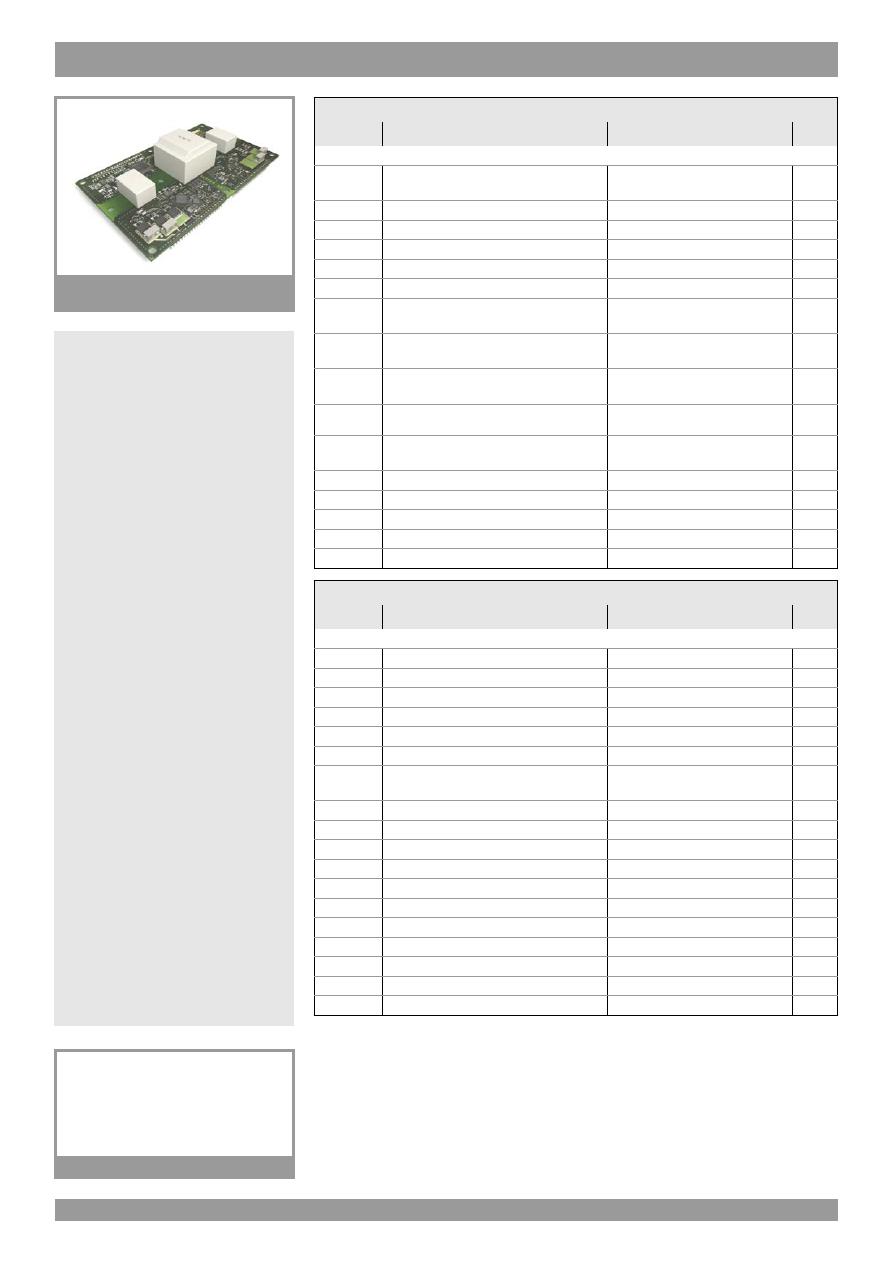
SKYPER 52 R
© by SEMIKRON
Rev. 7 – 24.02.2011
1
SKYPER
®
Driver Core
IGBT Driver Core
SKYPER 52 R
Target Data
Features
• Digital driver core
• 2 output channels with 9W ouput power
per channel
• Potential free power supply
• 3,3V and 5V signal interface
• Under voltage lockout
• Interlock logic
• Short circuit detection with intelligent
smooth shut-down
• Insulated temperature sensor signal
transmission
• Adaptable error processing
• IEC 60068-1 (climate) 40/085/56, no
condensation and no dripping water
permitted, non-corrosive, climate class
3K3 acc. EN60721
• Coated with varnish
• RoHS compliant
Typical Applications*
• Driver for IGBT modules in bridge
circuits in industrial application
• DC bus voltage up to 1200V
Footnotes
1) please refer to maximum limit of switching
frequency curves
2) the isolation test is no series test and must
be performed by the user
3) according to VDE 0110-20
Isolation coordination in compliance with
EN50178 PD2
Degree of protection: IP00
This is an electrostatic discharge sensitive device (ESDS), international standard IEC 60747-1,
Chapter IX
* The specifications of our components may not be considered as an assurance of component
characteristics. Components have to be tested for the respective application. Adjustments may
be necessary. The use of SEMIKRON products in life support appliances and systems is
subject to prior specification and written approval by SEMIKRON. We therefore strongly
recommend prior consultation of our staff.
Absolute Maximum Ratings
Symbol
Conditions
Values
Unit
V
s
Supply voltage primary (tp<20ms,
repition frequency < 1 Hz)
30
V
V
iH
Input signal voltage (HIGH)
Vs + 0.3
V
V
iL
Input signal voltage (LOW)
GND - 0.3
V
Iout
PEAK
Output peak current
50
A
Iout
AVmax
Output average current
300
mA
f
max
Max. switching frequency
100
kHz
V
CE
Collector emitter voltage sense across
the IGBT
1700
V
dv/dt
Rate of rise and fall of voltage
secondary to primary side
100
kV/µs
V
isol IO
Isolation test voltage input - output (AC,
rms, 2s)
4000
V
V
isolPD
Partial discharge extinction voltage,
rms, Q
PD
≤
10pC
1500
V
V
isol12
Isolation test voltage output 1 - output 2
(AC, rms, 2s)
1500
V
R
Gon min
Minimum rating for external R
Gon
0.6
R
Goff min
Minimum rating for external R
Goff
0.6
Q
out/pulse
Max. rating for output charge per pulse
100
µC
T
op
Operating temperature
-40 ... 85
°C
T
stg
Storage temperature
-40 ... 85
°C
Characteristics
Symbol
Conditions
min.
typ.
max.
Unit
V
s
Supply voltage primary side
21.6
24
26.4
V
I
SO
Supply current primary (no load)
180
mA
Supply current primary side (max.)
1800
mA
V
i
Input signal voltage on / off
3.3 / 0
V
V
IT+
Input treshold voltage HIGH
2.3
V
V
IT-
Input threshold voltage (LOW)
1
V
R
IN
Input resistance (switching/HALT
signal)
5
k
V
G(on)
Turn on output voltage
15
V
V
G(off)
Turn off output voltage
-15
V
f
ASIC
Asic system switching frequency
8
MHz
t
d(on)IO
Input-output turn-on propagation time
1.1
µs
t
d(off)IO
Input-output turn-off propagation time
1.1
µs
t
d(err)
Error input-output propagation time
µs
t
pERRRESET
Error reset time
µs
t
TD
Top-Bot interlock dead time
0
4.5
µs
C
ps
Coupling capacitance prim sec
35
pF
w
weight
0.16
g
MTBF
10
6
h